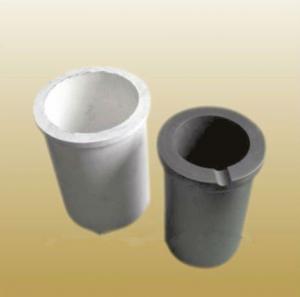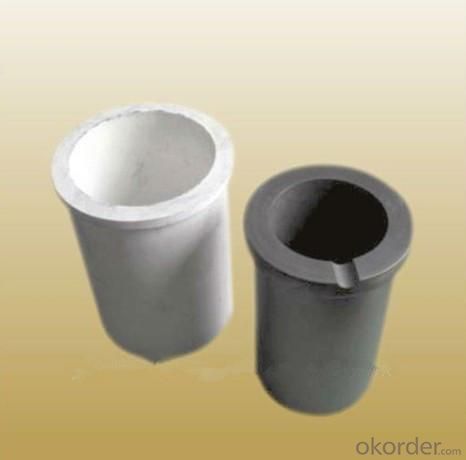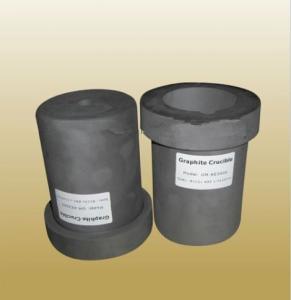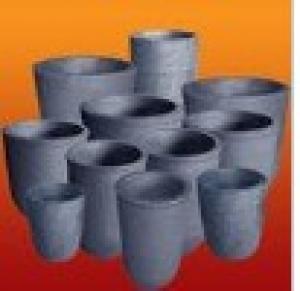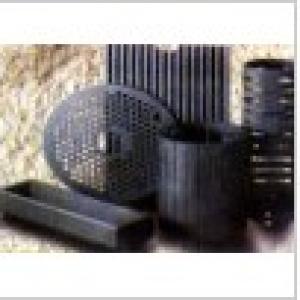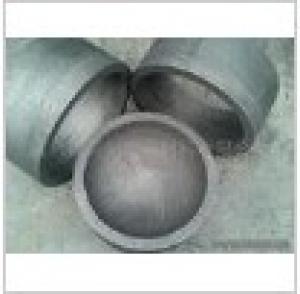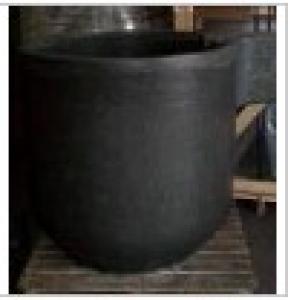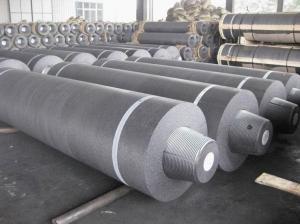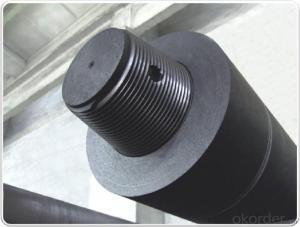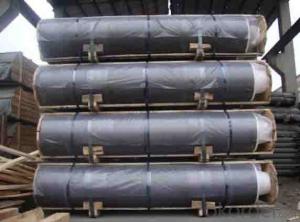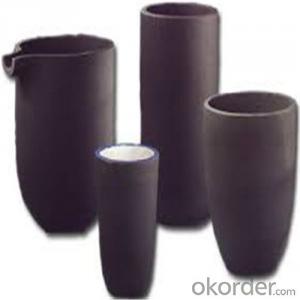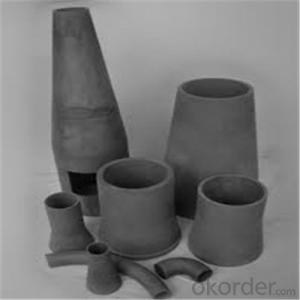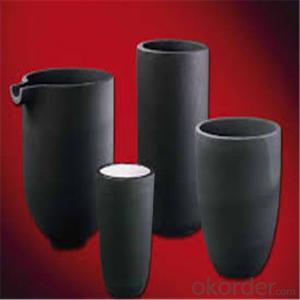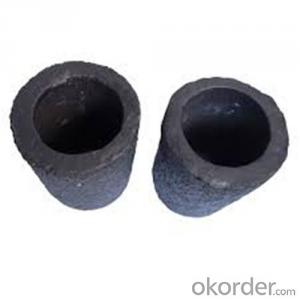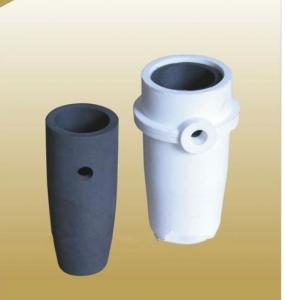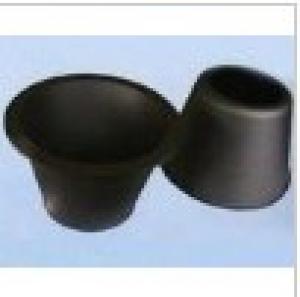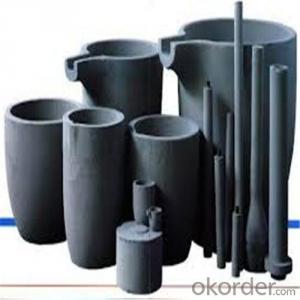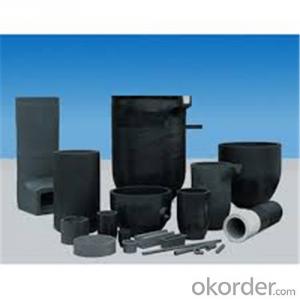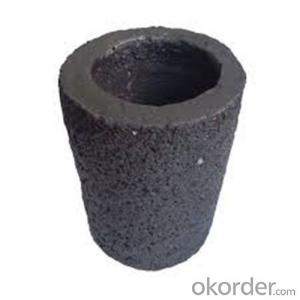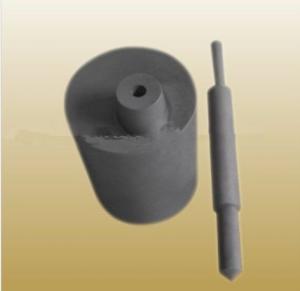Graphite Induction Melting Crucible Tongs
- Loading Port:
- China Main Port
- Payment Terms:
- TT or LC
- Min Order Qty:
- 5 Pieces pc
- Supply Capability:
- 10000 Pieces per Month pc/month
OKorder Service Pledge
OKorder Financial Service
You Might Also Like
Detailed Product Description
Graphite induction crucible sets
1.High pure graphite material.
2.Thermal stability, Corrosion resistance,Impact resistance
|
Isostaic graphite |
High pure graphite |
Extruded graphite | |
|
Estimated casting time |
250 |
160 |
80 |
|
Refractorines (degree centigrade) |
1800 |
1800 |
1400 |
|
Net weight of crucible |
Performance:
1. Thermal stability: According to the quench acute thermal using conditions of graphite crucible, we will specially design the production procedure, so as to ensure the reliability of product quality.
2. Corrosion resistance: Even and fine basic design will delay the erosion of crucible.
3. Impact resistance: Graphite crucible can bear high thermal impact, so any process can be carried out.
4. Acid resistance: The adding of special materials will greatly improve the quality of crucible, especially its index of acid resistance., and will prolong the service life of graphite crucible.
5. High heat Conduction: High content of fixed carbon ensures the good heat conduction, shorten the time of dissolution, and remarkably reduce the energy consumption.
6. Control of metal pollution: The component of material under strict control will ensure that graphite crucible will not pollute the metals when dissolving.
7. Quality stability: The process technology of forming under high pressure and quality guarantee system will fully ensure the stability of quality
- Q: What material can be used to build a furnace for intermediate frequency melting of aluminium bronze?
- Melting copper bronze can be generally used graphite crucible, more expensive, can also be used in conjunction with quartz sand, tying their own knot, drying after use.
- Q: What is the use of graphite for corrosion resistance?
- Made of graphite crucibles; used for melting aluminium. Graphite electrode.
- Q: You solved it. What happens if a quartz crucible is coated with a graphite crucible?
- It doesn't work, but it just adds heat resistance. You get a pretty bad heating effect when you put things in. Of course, if you put it very, very tight, the graphite crucible may crack when heated.
- Q: Can graphite crucibles be used for metal casting?
- Yes, graphite crucibles can be used for metal casting. Graphite is a common material used for crucibles in metal casting due to its high melting point and excellent thermal conductivity. It is particularly suitable for casting non-ferrous metals such as gold, silver, copper, and aluminum. Graphite crucibles can withstand high temperatures without cracking or deforming, making them ideal for melting and pouring molten metal. Additionally, graphite has low chemical reactivity, which prevents it from reacting with the metal being cast. This property ensures that the purity and quality of the final cast metal are maintained. However, it is important to note that graphite crucibles may not be suitable for casting certain metals with high melting points, such as steel, as they may not withstand the extreme temperatures required for melting these metals. In such cases, other materials like clay or ceramic crucibles may be more appropriate.
- Q: How do you ensure uniform heating of a graphite crucible?
- To achieve consistent heating of a graphite crucible, there are several measures that can be taken: 1. Placement: Position the crucible in the center of the heat source, whether it be a furnace or heating element, to guarantee even distribution of heat around the crucible. 2. Gradual preheating: Prior to adding any substance to the crucible, gradually preheat it to allow for uniform expansion and the elimination of any moisture or impurities. This can be accomplished by slowly increasing the temperature over time. 3. Regular stirring: If the crucible contains a liquid or molten material, it is crucial to periodically stir it. This ensures the even distribution of heat and prevents the formation of localized hot or cold spots. 4. Insulation: Utilize insulation materials like ceramic fiber or refractory bricks around the crucible to prevent heat loss and maintain a consistent temperature. This insulation aids in creating a more uniform heating environment. 5. Heat source control: Depending on the heating method employed, it is important to manage the heat source. For example, in a furnace, make certain that the temperature is set and maintained at the desired level. If a gas burner is used, adjust the flame to achieve an even heat distribution. 6. Sufficient time: Allow ample time for the crucible to heat up and for the substance inside to reach the desired temperature. Rushing the heating process can result in uneven heating and potential damage to the crucible. By adhering to these steps, one can ensure a more uniform heating of a graphite crucible, which is indispensable for obtaining accurate and consistent results in various applications such as melting, casting, or chemical reactions.
- Q: Why is graphite crucible smelting reducing properties of the burden is particularly vulnerable to corrosion?
- Environment, whether it is a vacuum, and if there is a lot of oxygen or air in the environment, it is very dangerous and deadly. If it is a vacuum device, it must leak check and reach a good vacuum.
- Q: Are there any safety concerns associated with using graphite crucibles?
- Yes, there are some safety concerns associated with using graphite crucibles. Firstly, graphite crucibles can become very hot when used in high-temperature applications, such as melting metals. This can pose a burn hazard if not handled properly. It is important to use appropriate protective equipment, such as heat-resistant gloves and clothing, when working with hot graphite crucibles. Secondly, graphite can release fine particles or dust when it is used or manipulated. Inhaling graphite dust can be harmful to the respiratory system, especially if exposure is prolonged or in high concentrations. It is advisable to work in a well-ventilated area or use respiratory protection, such as masks, to minimize the risk of inhalation. Additionally, graphite crucibles can react with certain chemicals or substances, particularly strong oxidizers, which can cause chemical reactions and potentially result in fires or explosions. It is crucial to be aware of the compatibility of graphite crucibles with the materials being handled and to handle them accordingly to prevent any hazardous reactions. Lastly, graphite crucibles can be fragile and prone to breakage if mishandled or subjected to sudden temperature changes. Broken crucibles can cause sharp edges or fragments that can cause injuries if not handled with caution. Overall, while graphite crucibles are widely used and generally considered safe, it is important to be aware of and address these safety concerns to ensure safe handling and minimize any potential risks.
- Q: How do you determine the appropriate crucible material for a specific application?
- To ascertain the suitable crucible material for a particular application, one must take into account several factors. First and foremost, it is crucial to assess the temperature range of the application. Different crucible materials possess varying temperature limitations. For applications that involve high temperatures, materials like graphite or refractory metals such as tungsten or molybdenum might be appropriate. Conversely, for applications with lower temperatures, materials like porcelain or alumina may suffice. Secondly, one should evaluate the chemical compatibility between the crucible material and the substances employed in the application. Certain materials may react with specific chemicals or gases, resulting in contamination or deterioration of the crucible. Therefore, it is imperative to choose a material that is chemically inert or resistant to the substances utilized. Thirdly, consideration should be given to the thermal conductivity and thermal shock resistance of the crucible material. Some applications necessitate rapid heating and cooling cycles, which can subject the crucible to thermal stress. In such cases, materials with high thermal shock resistance, such as quartz or boron nitride, may be more suitable. Furthermore, the mechanical strength and durability of the crucible material should be taken into account. Certain applications involve mechanical forces, stirring, or pouring of molten materials, which can impose physical stress on the crucible. Materials like silicon carbide or stainless steel exhibit good mechanical strength and can withstand such conditions. Lastly, the cost and availability of the crucible material should be considered. While certain materials, like platinum or iridium, offer exceptional performance, they can be expensive and challenging to procure. Thus, striking a balance between performance and cost-effectiveness is important. In conclusion, determining the appropriate crucible material for a specific application necessitates careful consideration of factors such as temperature range, chemical compatibility, thermal conductivity and shock resistance, mechanical strength, and cost. By thoroughly evaluating these factors, one can select a crucible material that will effectively meet the requirements of the application.
- Q: Is it possible to repair a cracked or damaged graphite crucible?
- Yes, it is possible to repair a cracked or damaged graphite crucible. However, the success of the repair depends on the extent and location of the damage. Graphite crucibles are typically repaired using a specialized graphite repair compound or paste. This compound is applied to the cracked or damaged area and then heated to cure and bond with the existing graphite material. The repaired crucible can then be used again for various high-temperature applications. It is important to note that the repair process may not always be successful, especially if the damage is severe or if the crucible has been compromised in a critical area. In such cases, it may be necessary to replace the crucible to ensure the integrity and safety of the process.
- Q: Can a graphite crucible be used for melting americium?
- Yes, a graphite crucible can be used for melting americium. Graphite crucibles have high melting points and excellent resistance to thermal shock, making them suitable for melting high temperature materials such as americium.
1. Manufacturer Overview
| Location | Guangdong,China (Mainland) |
| Year Established | 2010 |
| Annual Output Value | |
| Main Markets | North America South America Eastern Europe Southeast Asia Africa Oceania Mid East Eastern Asia Western Europe |
| Company Certifications |
2. Manufacturer Certificates
| a) Certification Name | |
| Range | |
| Reference | |
| Validity Period |
3. Manufacturer Capability
| a) Trade Capacity | |
| Nearest Port | |
| Export Percentage | 61% - 70% |
| No.of Employees in Trade Department | |
| Language Spoken: | |
| b) Factory Information | |
| Factory Size: | 1,000-3,000 square meters |
| No. of Production Lines | Above 10 |
| Contract Manufacturing | OEM Service Offered |
| Product Price Range | |
Send your message to us
Graphite Induction Melting Crucible Tongs
- Loading Port:
- China Main Port
- Payment Terms:
- TT or LC
- Min Order Qty:
- 5 Pieces pc
- Supply Capability:
- 10000 Pieces per Month pc/month
OKorder Service Pledge
OKorder Financial Service
Similar products
Hot products
Hot Searches
Related keywords
